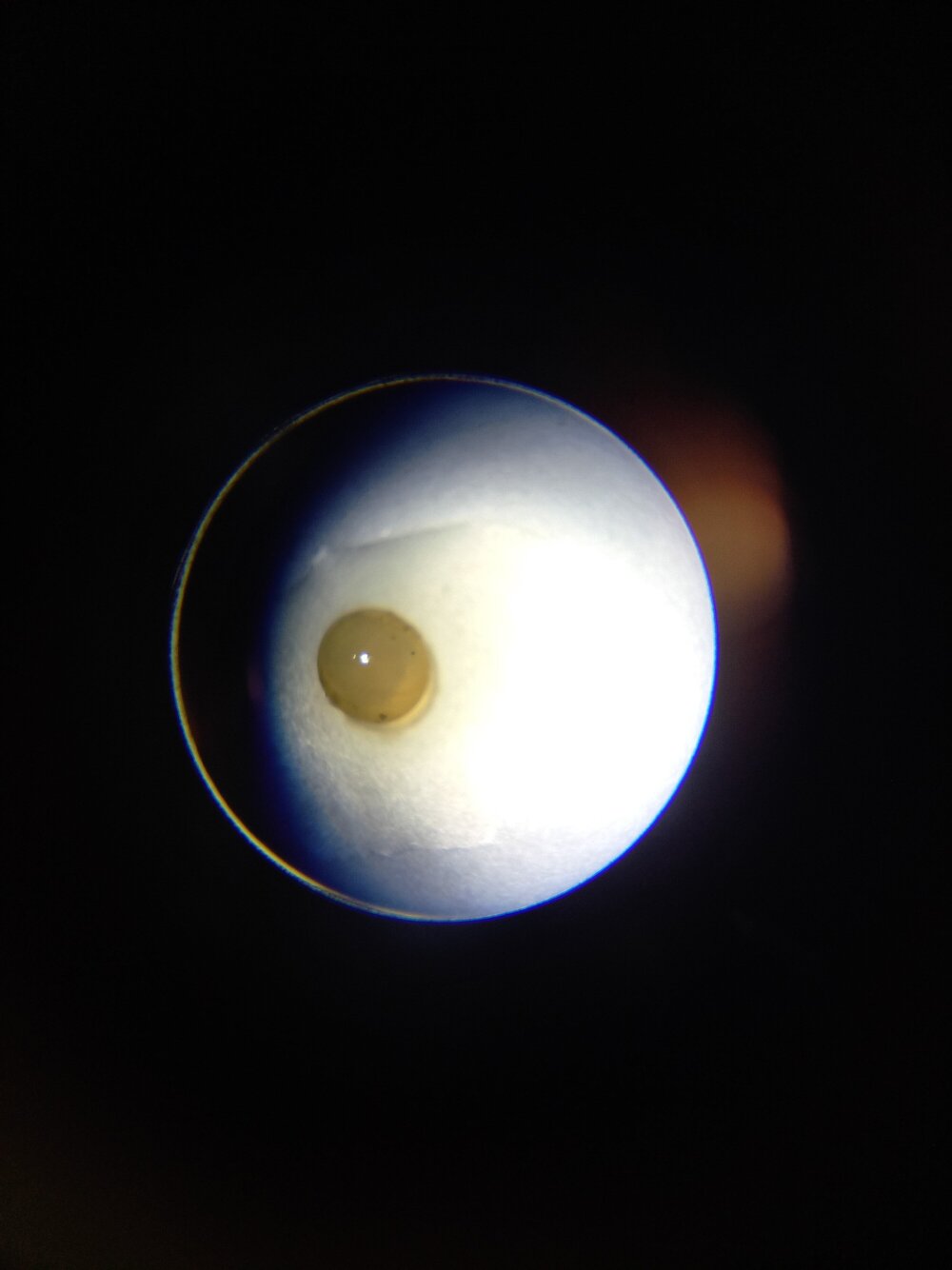tam
Member
- Joined
- 5 May 2011
- Messages
- 1,470
I was having trouble with my pygmy corys I have four left but they seem to be doing really well now. They are plump and really enjoying a diet of micro/grindle worms once a day and bug bites once a day. Over the last 6 weeks I've caught them spawning about four times. There is one female and three males. I've managed to find 1-4 eggs each time (she seems to scatter them individually under a leaf and never on the glass or more than one in one place). I've not managed to get a single egg to hatch - they all fuzz within 24 hours and no fry have appeared in the tank.
The last spawn was Wednesday and I pulled four eggs (added a wool mop which she seems to like). This time I put them in a cup of rain water and added an alder cone. Today two have a fuzzy halo and opaque so definately no good. The other two don't look that promising either - should there be eyes showing by now - I've attached a photo.
Any ideas? I was hoping they'd populate the tank - shall I give up and just buy some more?

The last spawn was Wednesday and I pulled four eggs (added a wool mop which she seems to like). This time I put them in a cup of rain water and added an alder cone. Today two have a fuzzy halo and opaque so definately no good. The other two don't look that promising either - should there be eyes showing by now - I've attached a photo.
Any ideas? I was hoping they'd populate the tank - shall I give up and just buy some more?



